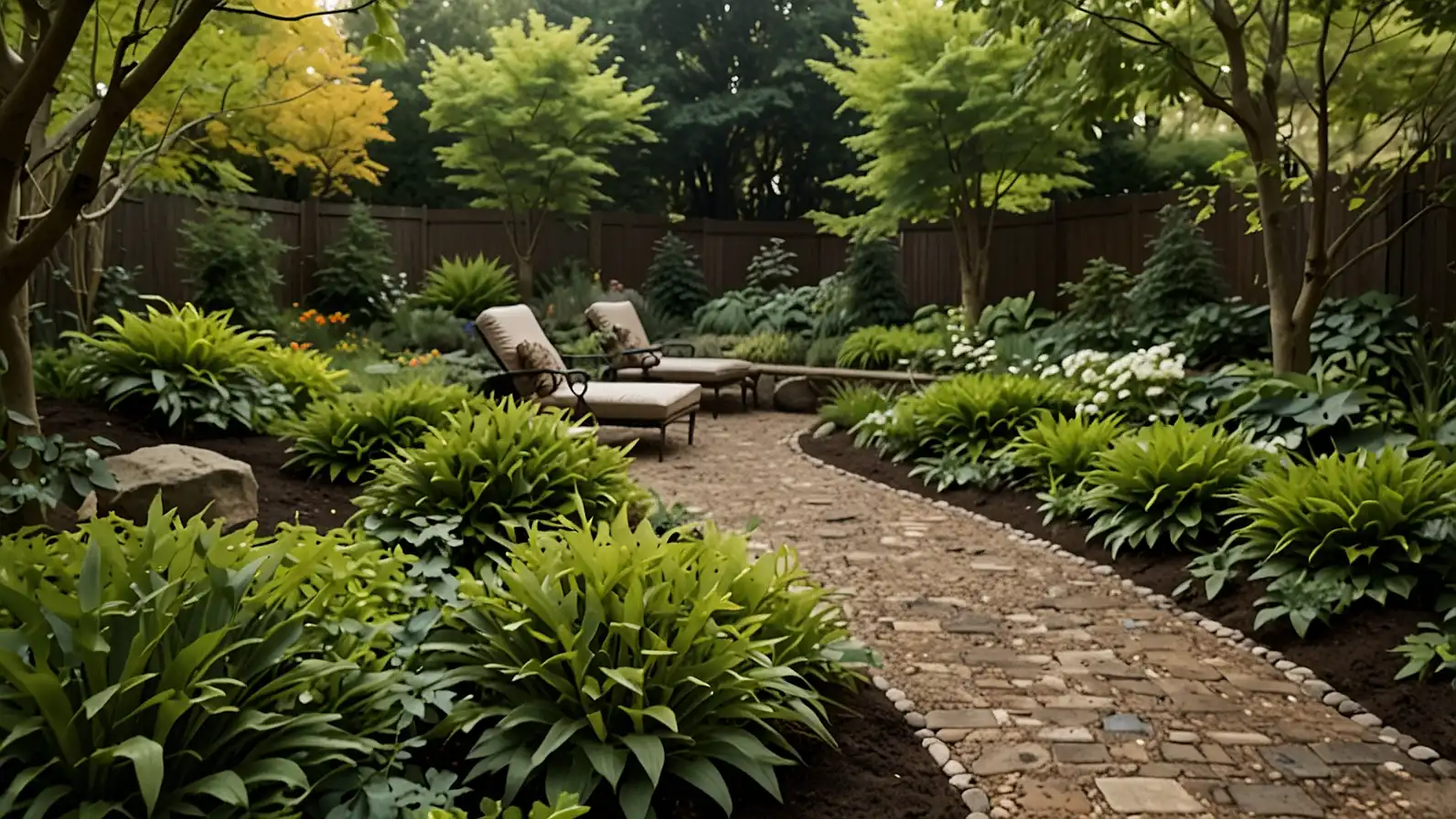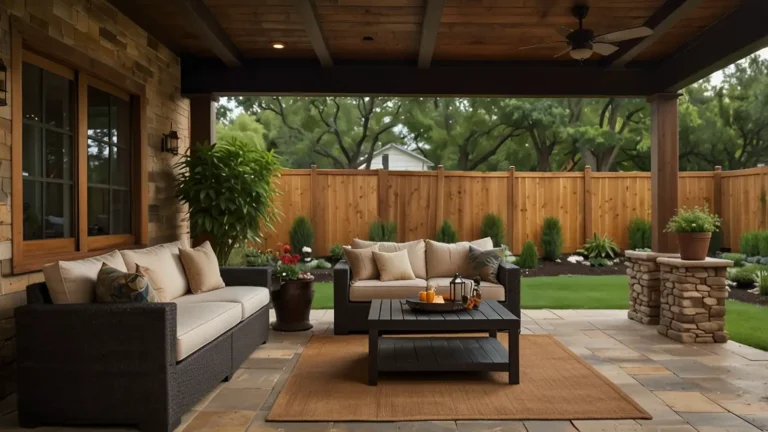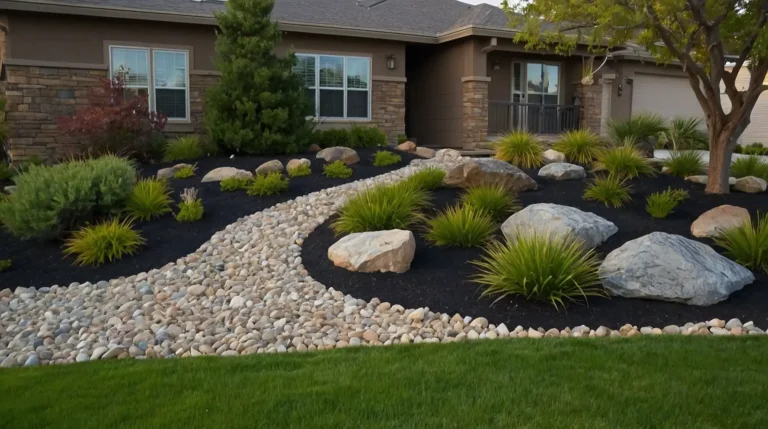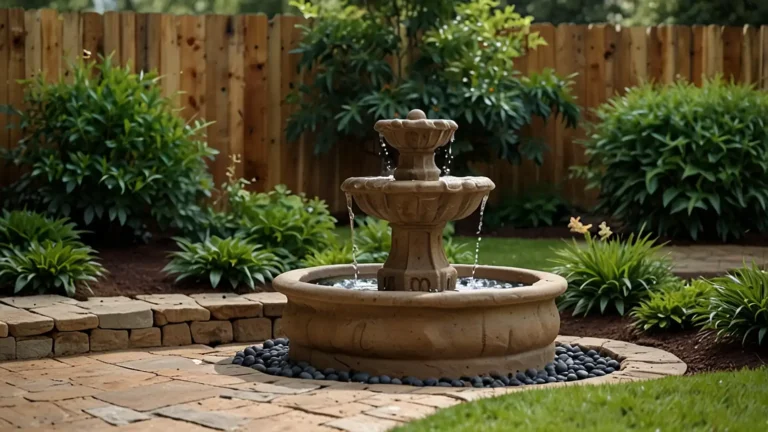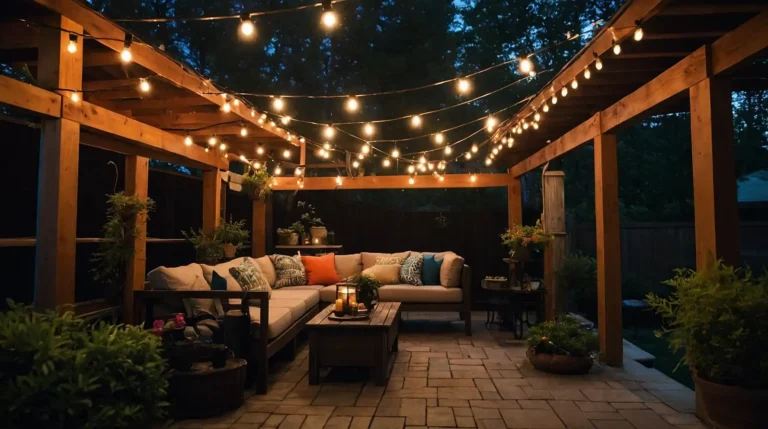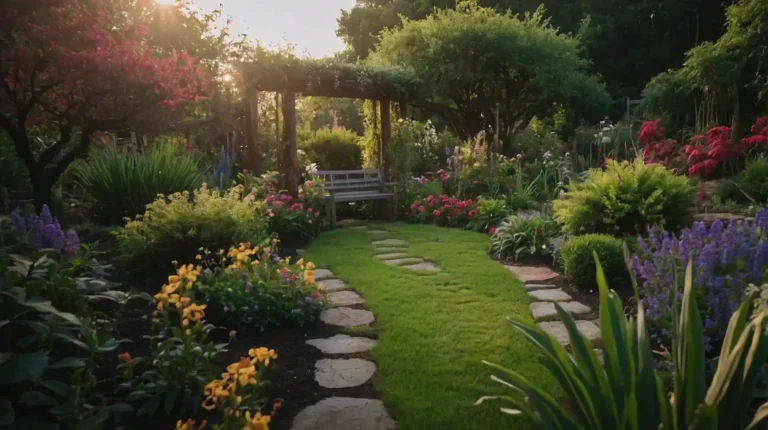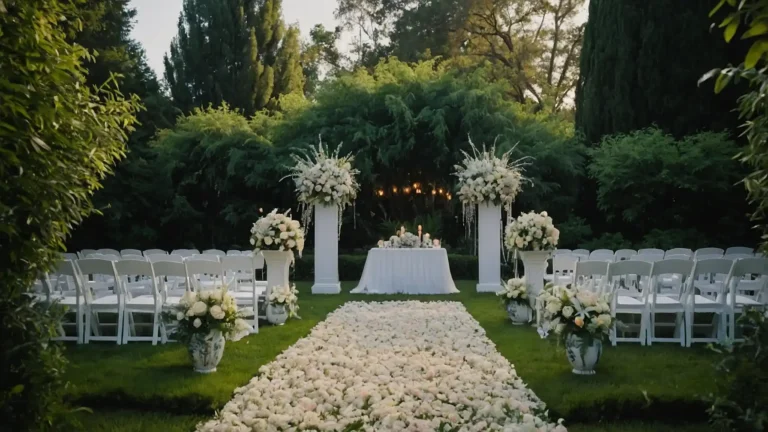17 Shade Garden Design Layout Ideas
You have shaded areas in your yard that seem challenging to design and plant effectively.
Shade gardens offer unique opportunities to create lush, peaceful retreats with stunning foliage displays.
These thoughtful layout ideas transform dark corners into vibrant, welcoming outdoor spaces.
Get ready to discover designs that celebrate shade while maximizing beauty and functionality.
1: Layered Woodland Theme Layout
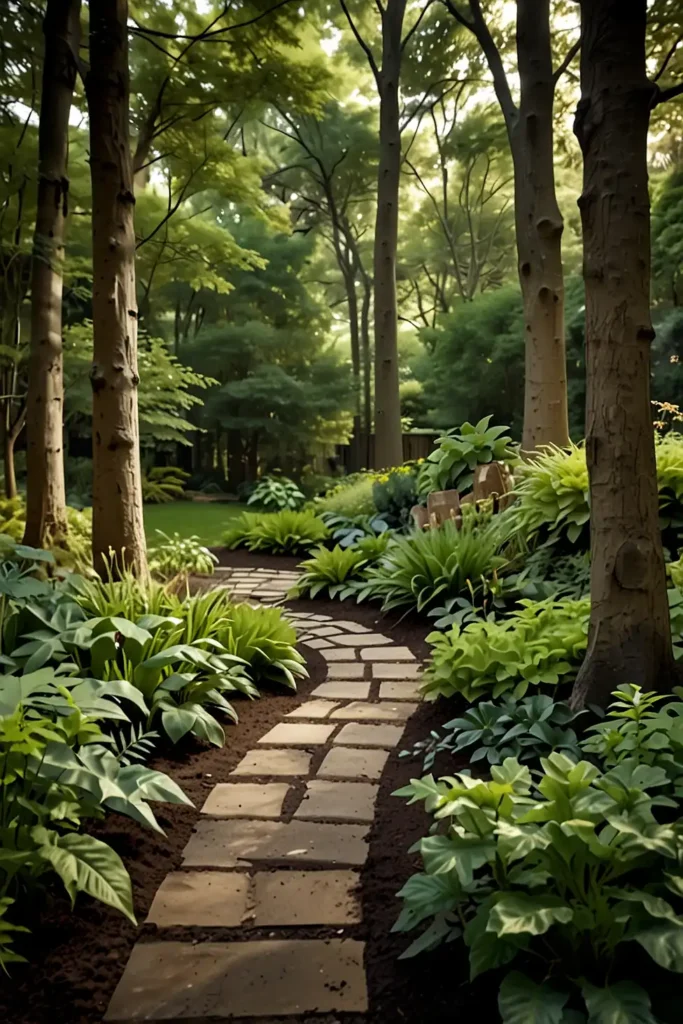
You can mimic natural forest environments with multi-level plantings that create depth and interest.
Place tall shade trees as the canopy layer, understory shrubs in the middle.
Add perennials and ground covers at soil level for complete coverage.
The layered approach provides year-round structure while supporting diverse plant communities.
2: Formal Geometric Shade Design
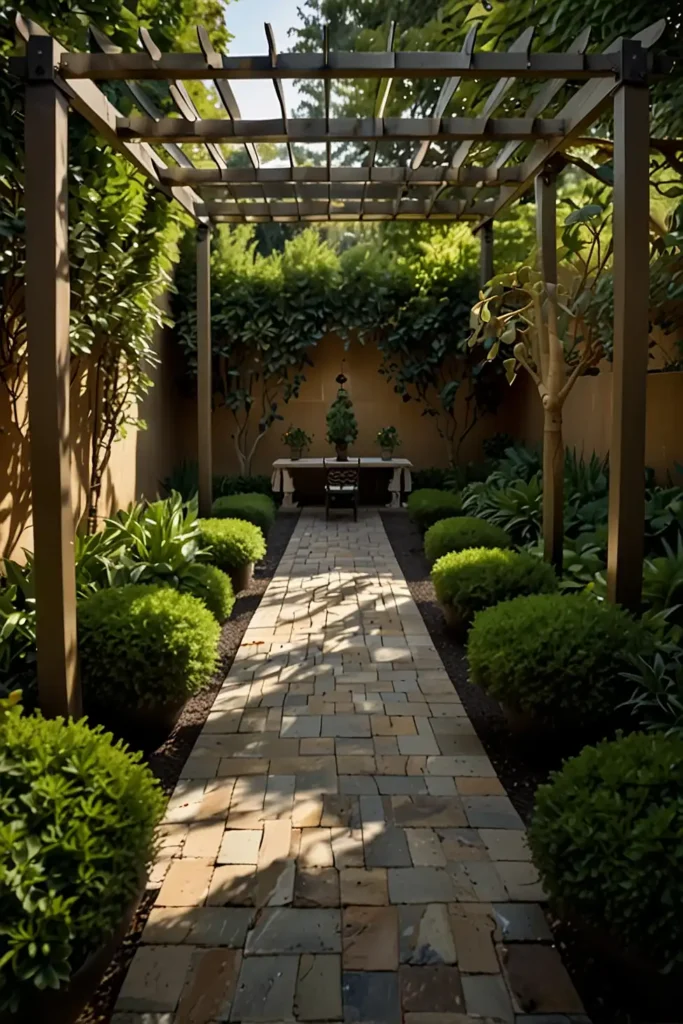
You’ll achieve elegant sophistication with structured geometric patterns using shade-loving plants.
Create symmetrical beds bordered by boxwood hedges or neat hostas plantings.
Add central focal points like sculptures, fountains, or specimen shade trees.
The formal layout brings order and refinement to naturally wild shade areas.
3: Curved Pathway Meandering Layout
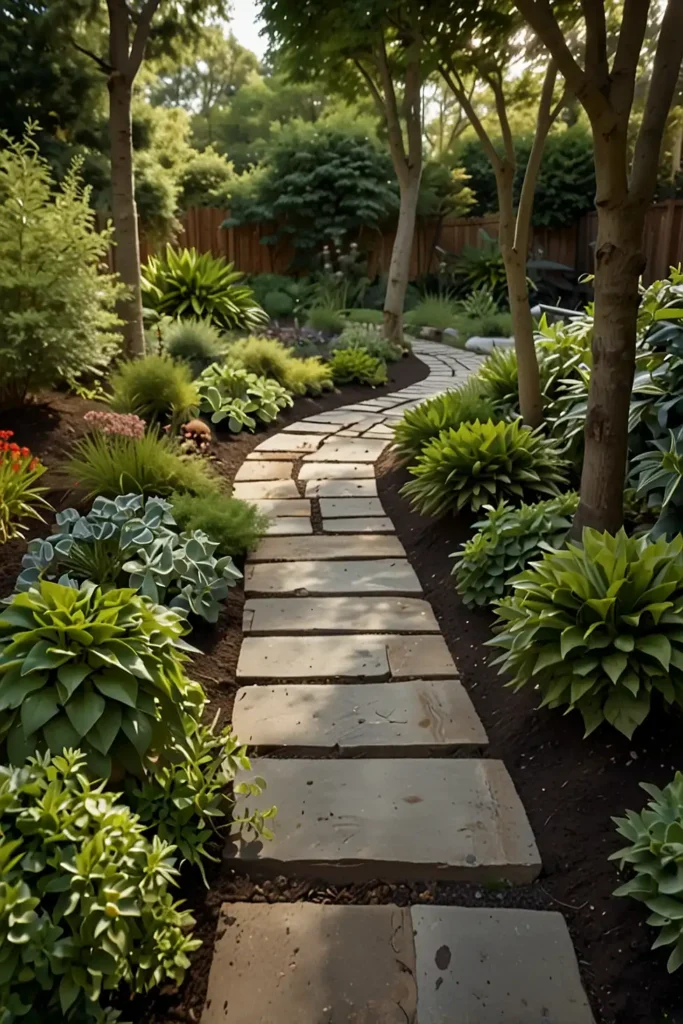
You can guide visitors through shade gardens with gently curving pathways.
Use materials like stepping stones, bark chips, or decomposed granite for natural paths.
Plant taller specimens along the outer curves to create mystery and discovery.
The winding design encourages slow exploration while revealing garden surprises gradually.
4: Circular Island Bed Arrangement
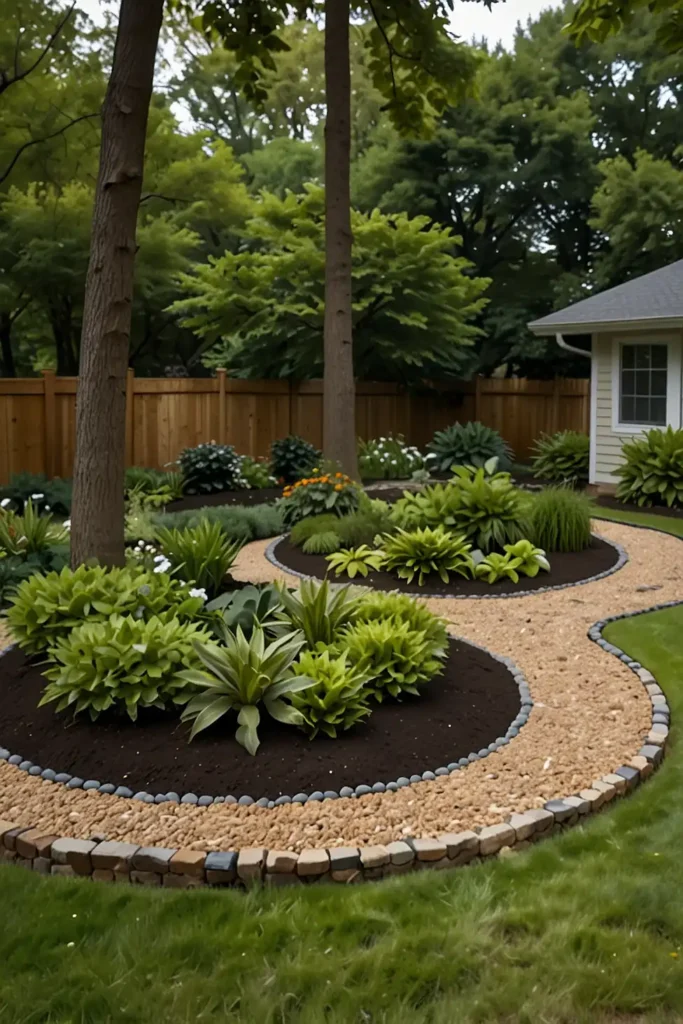
You’ll create focal points with circular planting beds positioned throughout shaded areas.
Center each island with a dramatic specimen like Japanese maple or flowering dogwood.
Surround the centerpiece with layers of decreasing height toward the edges.
The circular design provides structure while allowing easy maintenance access from all sides.
5: Asymmetrical Natural Drift Layout
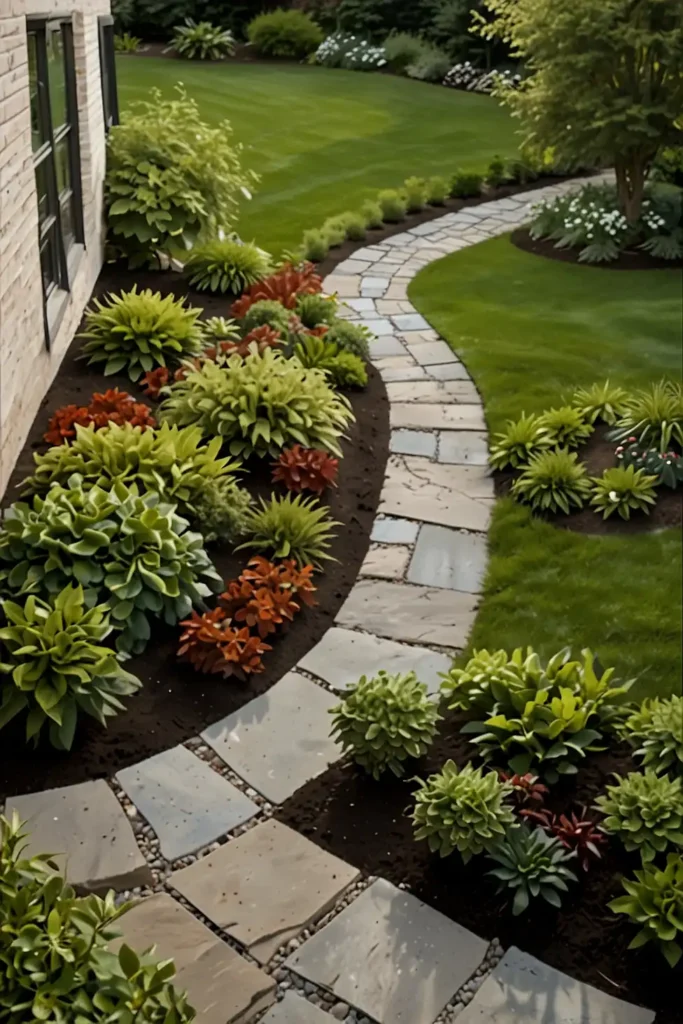
You can achieve organic beauty with irregularly shaped planting areas that flow naturally.
Group plants in odd-numbered clusters for the most visually pleasing arrangements.
Allow different plant varieties to drift into each other for seamless transitions.
The informal design mimics nature while creating dynamic visual movement throughout the space.
6: Terraced Slope Shade Garden
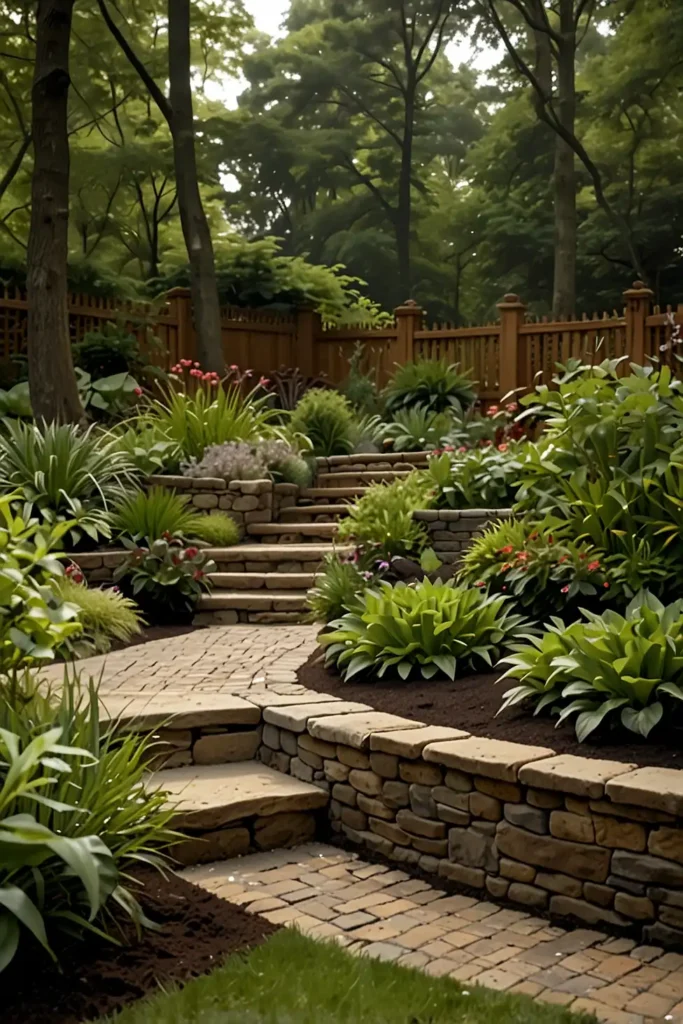
You’ll maximize sloped areas with terraced levels that create distinct planting zones.
Build retaining walls using natural stone, timber, or decorative concrete blocks.
Plant each terrace level with different shade plants suited to the exposure.
The stepped design prevents erosion while providing diverse microclimates for varied plantings.
7: Border Foundation Planting Scheme
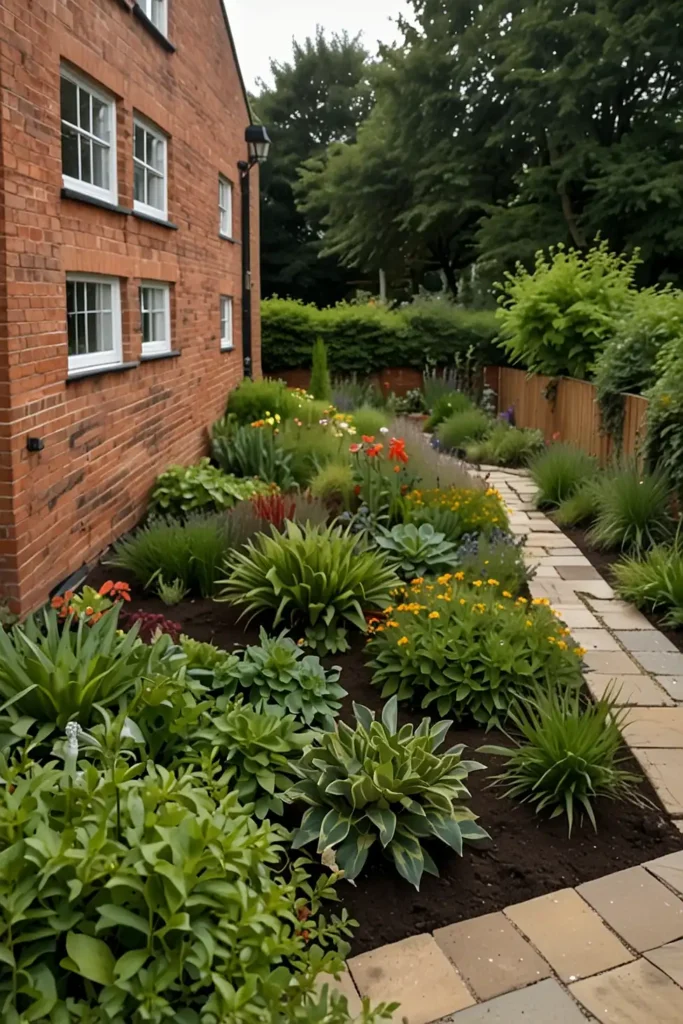
You can enhance building foundations with carefully planned shade border gardens.
Layer plants by height with tallest near the structure, shortest at front edges.
Choose evergreen shrubs for year-round structure and seasonal perennials for color.
The border design softens harsh architectural lines while providing attractive seasonal displays.
8: Container Garden Cluster Layout
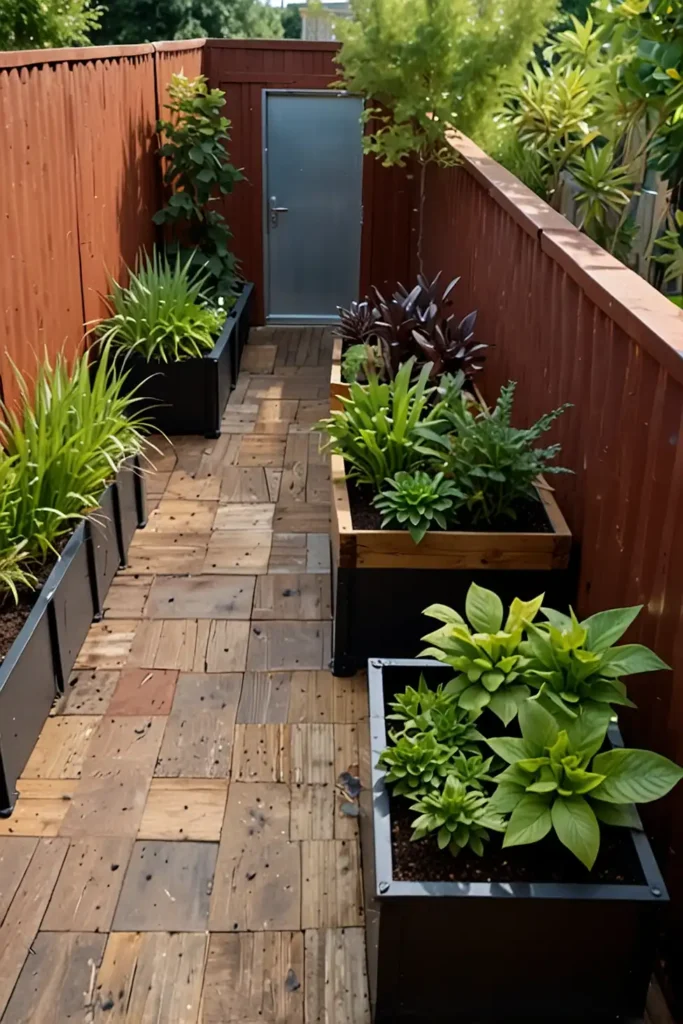
You’ll achieve flexibility with grouped container arrangements throughout shaded spaces.
Use various pot sizes and heights to create dynamic visual compositions.
Choose containers that complement your home’s architectural style and color palette.
The portable design allows seasonal rearrangement while providing excellent drainage for shade plants.
9: Rain Garden Depression Design
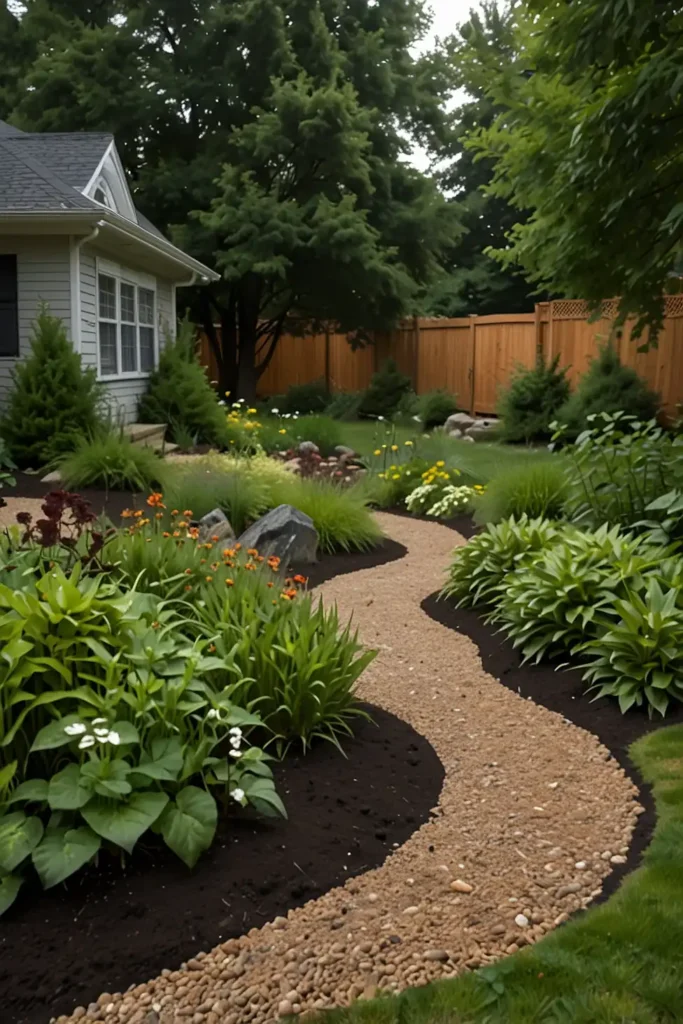
You can solve drainage issues while creating beautiful shade gardens in low-lying areas.
Design gentle depressions that collect and filter rainwater naturally.
Plant moisture-loving shade perennials like astilbe, cardinal flower, and ferns.
The functional design manages stormwater while providing habitat for beneficial wildlife.
10: Shade Perennial Mixed Border
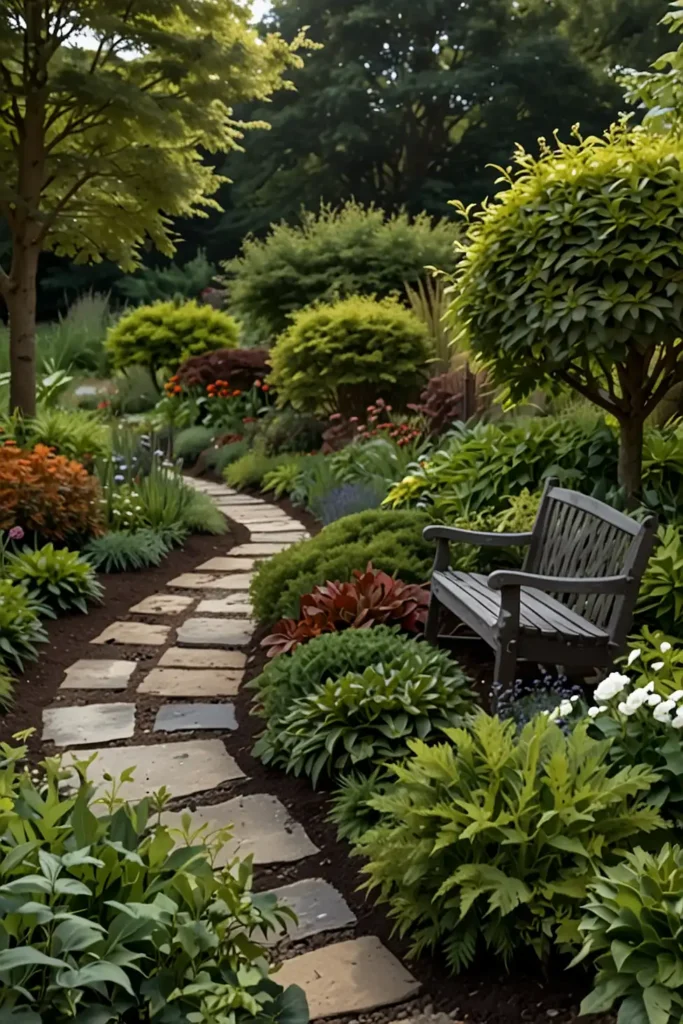
You’ll create season-long interest with diverse perennial combinations in border layouts.
Combine spring ephemerals, summer bloomers, and fall foliage plants for continuous display.
Plan bloom succession to ensure color and interest throughout the growing season.
The mixed border provides low-maintenance beauty while supporting pollinators in shaded areas.
11: Japanese-Inspired Zen Layout
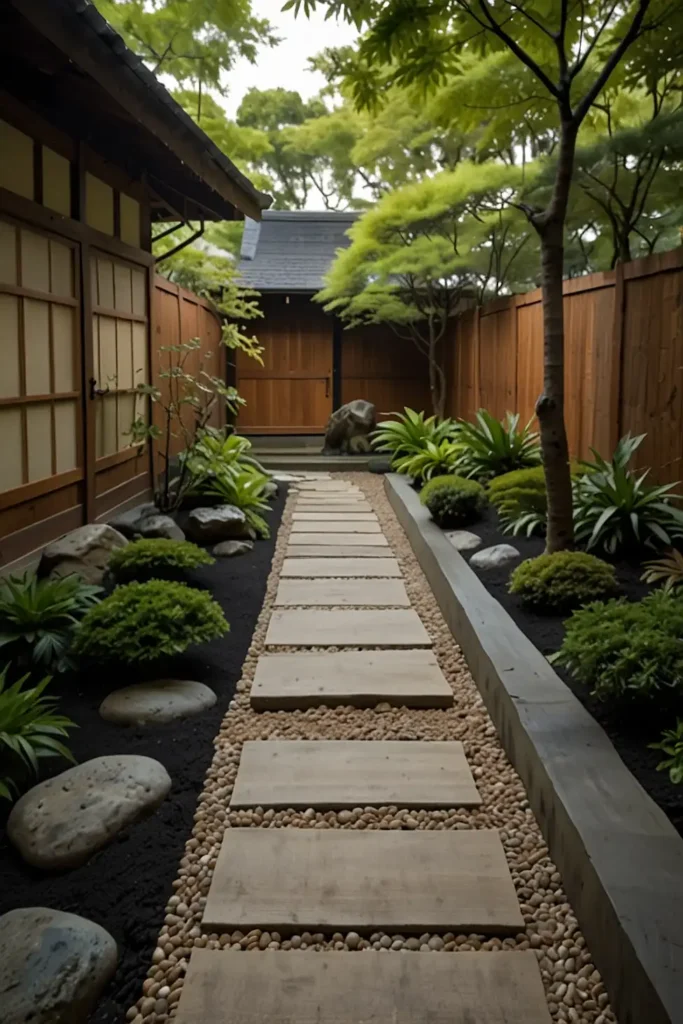
You can achieve tranquil simplicity with Japanese design principles in shade gardens.
Use asymmetrical balance, natural materials, and restrained plant palettes.
Include elements like stone lanterns, bamboo fountains, or raked gravel areas.
The minimalist design promotes meditation while celebrating the subtle beauty of shade plants.
12: Cottage Garden Informal Style
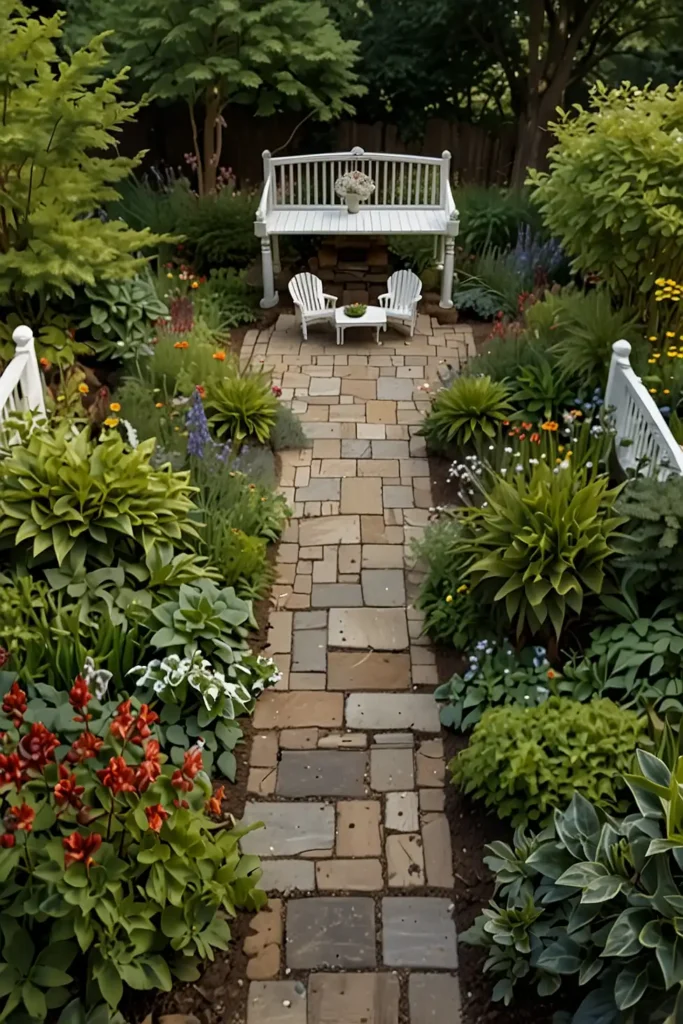
You’ll create romantic charm with densely planted cottage-style shade gardens.
Mix flowering perennials, ferns, and hostas in abundance without rigid structure.
Allow plants to self-seed and naturalize for authentic cottage garden character.
The informal design provides maximum color and texture while maintaining relaxed, welcoming appeal.
13: Modern Grid Pattern Layout
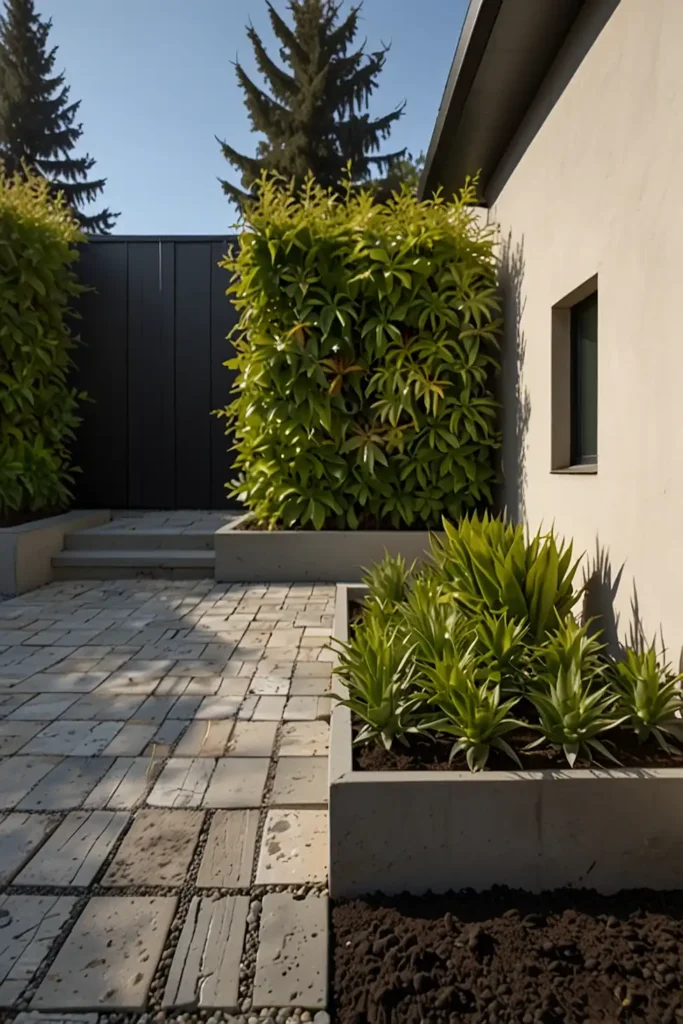
You can achieve contemporary style with geometric grid-based planting schemes.
Create rectangular or square planting blocks separated by clean pathways.
Use architectural plants like ornamental grasses and structural perennials.
The modern design brings order and sophistication to shade areas with bold, graphic impact.
14: Spiral Herb and Shade Garden
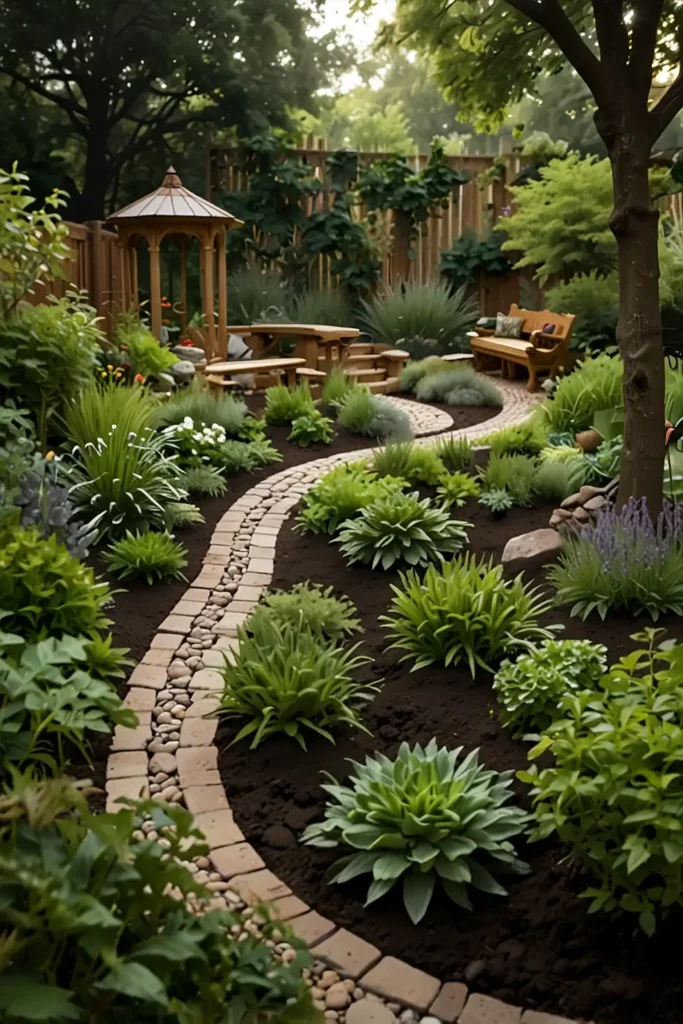
You’ll combine beauty and function with spiral-shaped shade herb gardens.
Build raised spiral beds that maximize growing space in compact areas.
Plant shade-tolerant herbs like parsley, chives, and lemon balm throughout the spiral.
The three-dimensional design provides easy access while creating attractive sculptural garden elements.
15: Fragrance-Focused Sensory Layout
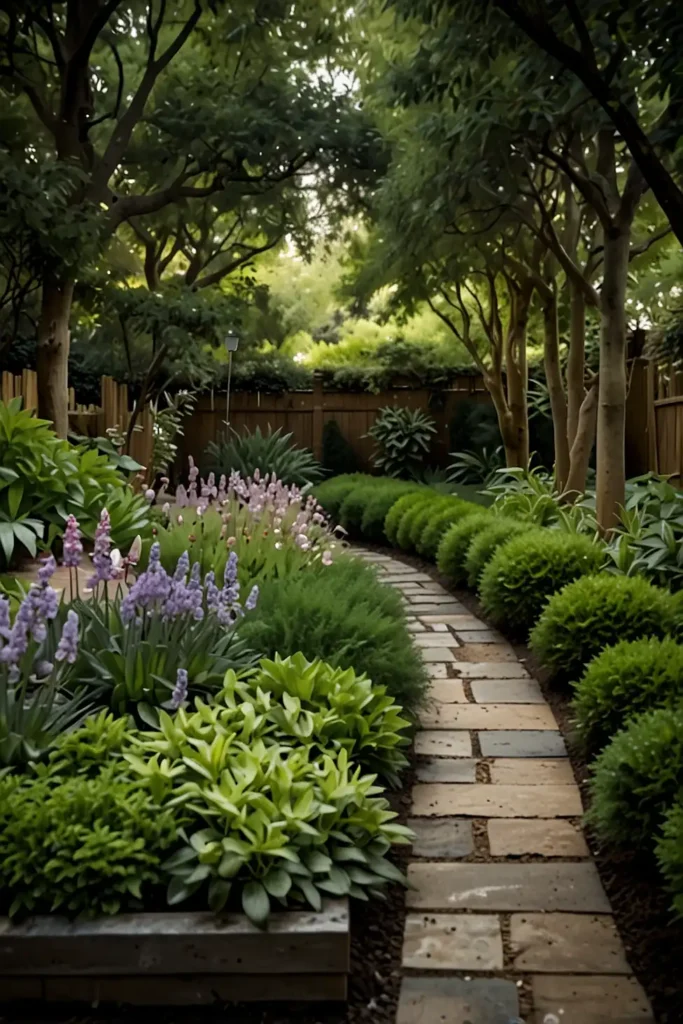
You can engage multiple senses with shade gardens designed around aromatic plants.
Position fragrant specimens along pathways where visitors will brush against them.
Include plants with interesting textures, sounds, and seasonal fragrance variations.
The sensory design creates memorable experiences while accommodating vision-impaired garden visitors.
16: Seasonal Color Succession Design
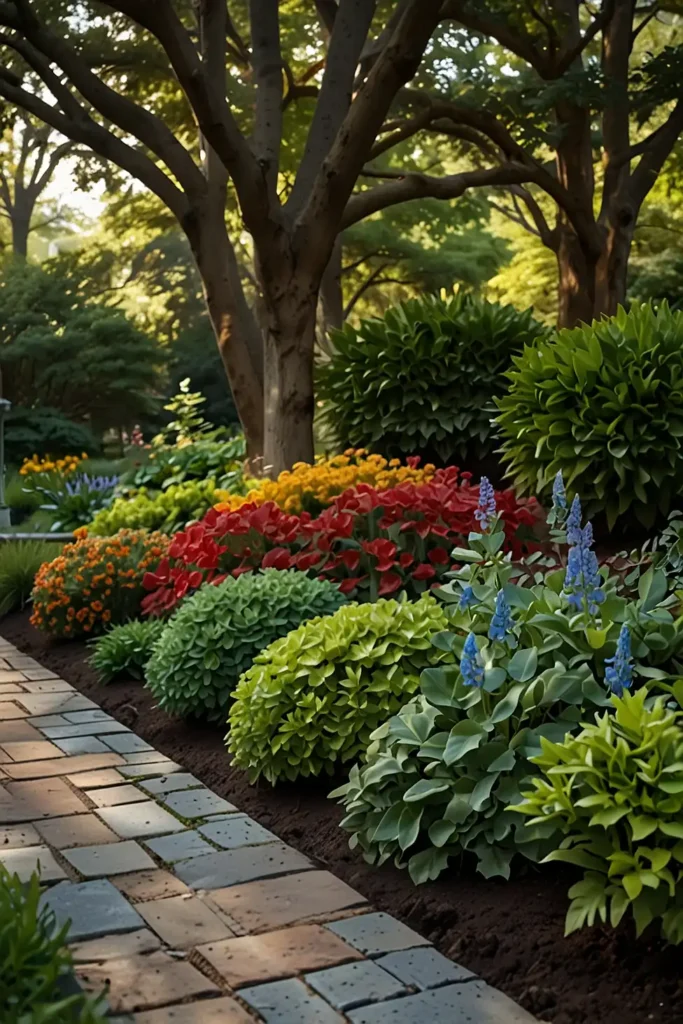
You’ll maintain year-round interest with carefully planned seasonal color progressions.
Plan spring bulbs, summer perennials, fall foliage, and winter evergreen structure.
Choose plants that peak at different times for continuous garden appeal.
The succession design ensures your shade garden remains attractive throughout all seasons.
17: Wildlife Habitat Ecosystem Layout
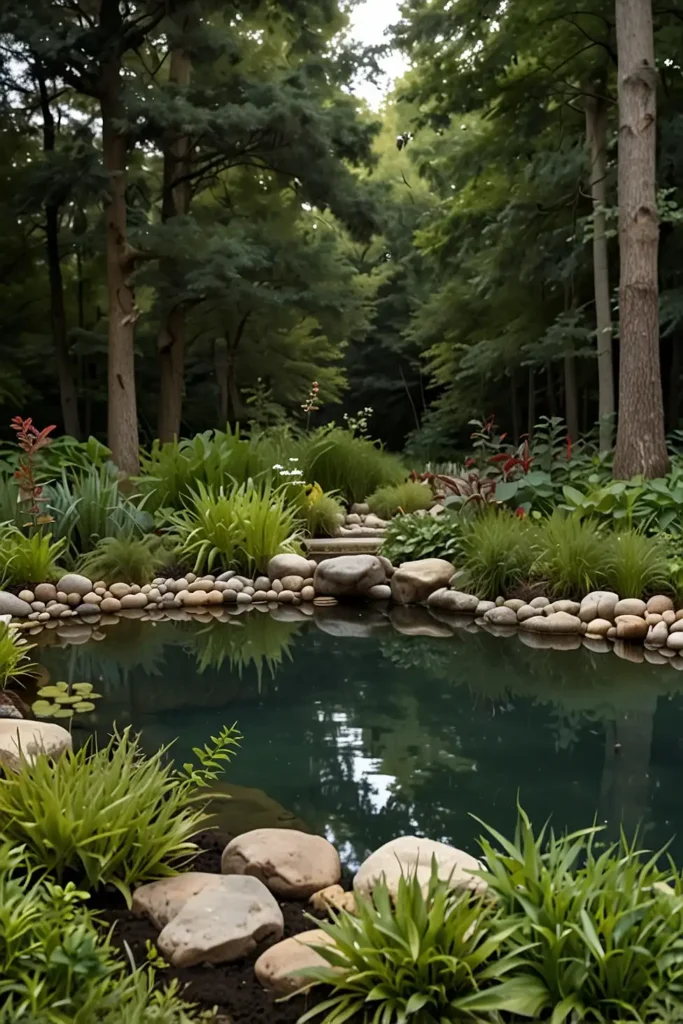
You can support local wildlife with shade gardens designed as complete ecosystems.
Include native plants that provide food, shelter, and nesting sites.
Add water sources, brush piles, and diverse plant heights for habitat variety.
The ecological design benefits local wildlife while creating naturally beautiful, low-maintenance garden spaces.
Conclusion
Shade garden layouts transform challenging dark areas into lush, peaceful retreats that celebrate foliage beauty and seasonal interest.

